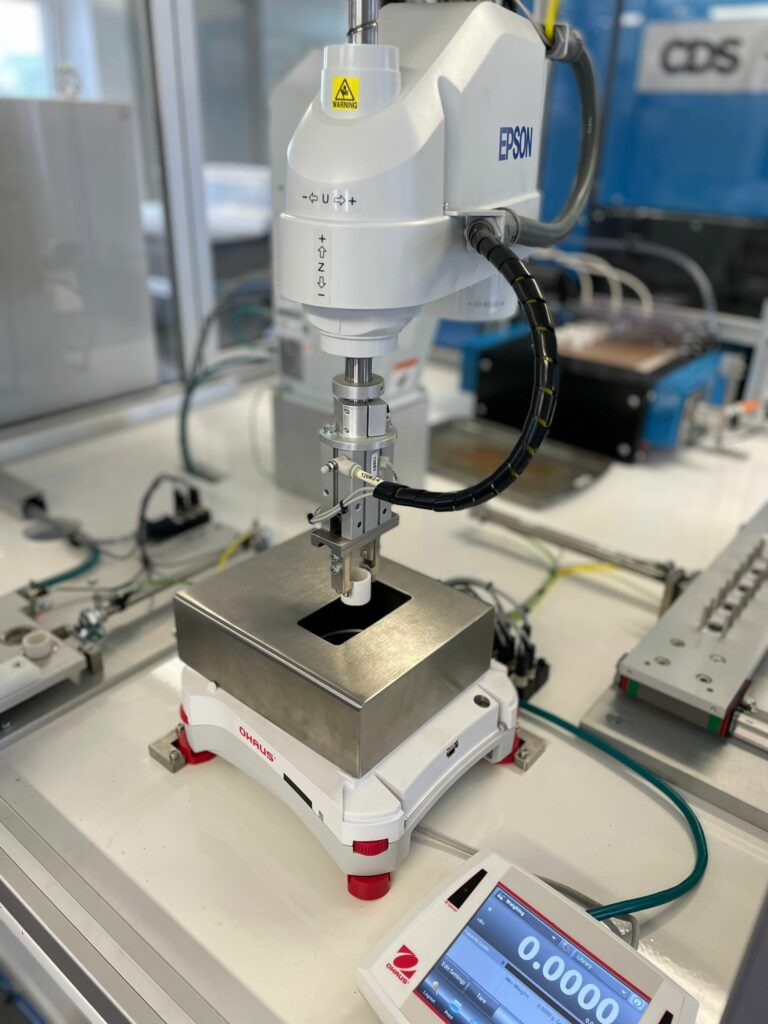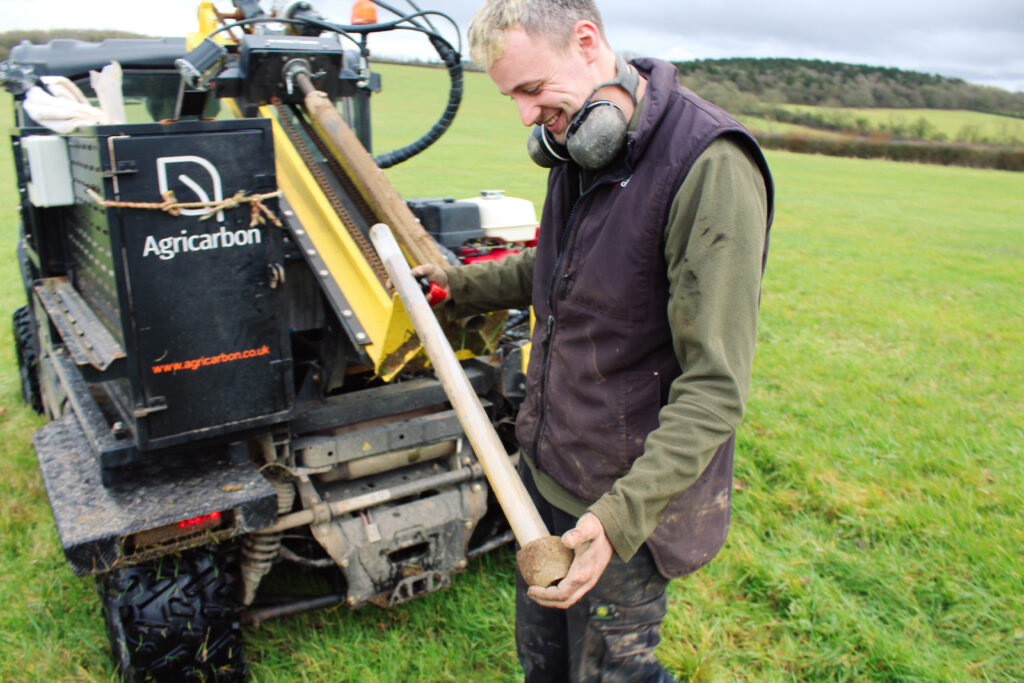By Dr. Harry Kamilaris
Introduction
Soil’s capacity to remove atmospheric CO2 and increase stored organic carbon is bringing new commercial opportunities for farmers. However, the market and regulatory landscape is still evolving and different Carbon Project Developers (CPDs) – companies who partner with farmers to create and sell carbon credits – have adopted a variety of different methodologies. The accurate measurement of soil carbon stocks is vital. For farmers, choosing to work with a CPD that will offer the best, long-term income is vital to making the most of this opportunity.
There are two main parts to the role of the CPD. First, they need to support farmers’ choice of farming practices to build soil carbon stocks. Second, they need to quantify and verify the increase in soil carbon stock – as reliably as possible. This second part is critical to securing carbon buyers – willing to pay for soil carbon removals – and for the agricultural sector to be recognised for delivering real and substantiated climate benefits.
Success hinges on selecting the right CPD: one who not only understands your needs but who has also mastered the specialism of soil carbon MRV – Monitoring, Reporting, and Verification.
In this guide, we explain the essential components of reliable, transparent and future-proofed MRV, equipping farmers to ask the right questions and make informed decisions in their journey into monetising soil carbon restoration.
What is Soil Carbon MRV?
Soil carbon MRV is the backbone of any credible carbon project. It involves robust measurement of the amount of organic carbon in farmed soils at the start of your contract, and then verifies the change in quantities of soil carbon stocks at the end. This is used to validate carbon credits that have been issued and paid for over the course of the project. It also provides a guide to the farming practices that are likely to yield the most carbon benefit. As you explore potential partnerships, it’s crucial to select a CPD who can demonstrate a fit-for-purpose and comprehensive MRV process that will stand the test of time. This ensures that your carbon credits will be respected and valued by the market as it evolves and offer the best income opportunities from buyers looking for high quality credits they can trust.

Key Considerations for Farmers
- Activity vs outcome-based payments: Some CPDs remunerate famers for making practice changes (e.g., use of cover-crops) while others make payments based on the soil carbon outcome. In both cases, the CPD still needs to provide robust evidence to validate the carbon benefit being sold to carbon buyers, for your income to be reliable.
- Scientific Rigor and Accuracy: Ensure the developer uses accepted science-based methods to measure soil carbon. This can be direct use of primary data or modelled estimates; both must be demonstrated to give reliable results when measuring change in carbon stocks over time.
- Protocol Alignment: CPDs should adhere to credible MRV protocols. Comprehensive MRV protocols are published by independent registries; to improve integrity, CPDs can align with these to ensure their work meets recognised carbon market standards.
- Transparency and Trust: Look for a developer who values transparency in their processes and communications, especially with carbon buyers. Clear, honest interaction helps you to understand your options and helps carbon buyers have confidence the credits they pay for from your land.
- Farmer-Friendly Approach: The ideal developer understands farming realities and tailors their approach accordingly. The service should be designed with practicality in mind, making the process accessible and manageable for farmers.
Activity vs outcome-based payments
Payments based on ‘farm activities’ are popular among Carbon Project Developers. It is often easier to validate implementation of farming practices (e.g., farm visits can check cover crops have been planted) than it is to measure the change in carbon in the soil (the outcome). In the near-term it may also be lower risk to farmers because payments do not require proof that a soil carbon benefit has been achieved. However, long-term this approach may be hard to maintain as carbon reporting and carbon markets become more structured and standards are established to avoid greenwashing. An approach that can clearly show measured change, or a well evidenced estimate, may be a safer option over the long term. Remember, once you have made a start with a chosen project developer, it may be hard to switch to a new scheme that requires a practice change to be introduced to qualify for credits.
Scientific Rigor and Accuracy in Measuring Soil Carbon Stocks
Measuring carbon stocks with rigor and accuracy requires expertise that often sits outside the CPD organisation. Using an independent service like Agricarbon, designed explicitly for the purpose of validating carbon credits, brings trust and value to the carbon buyer, and security of income to the farmer. The use of direct measurement (analysing actual soil samples) is fundamental, even where a modelled estimate is used to allocate carbon payments. ‘Ground-truth data’ from direct measurement is needed to set the start point and to calibrate models to give a realistic estimate. All credible MRV protocols, from independent carbon registries, require direct measurement at the start of a project and again at least every 5 years, to verify that benefits claimed and paid for are real.
The methodology should include a logical sampling design: the number of samples required and how they are allocated across the measured area. This should include a statistical assessment of whether the sample number will be sufficient to detect change in carbon stocks over the project timeframe and a valid approach to distributing samples to represent the whole measured area. For example, random allocation is a common and recognised approach, while more directed sampling (covering some areas and not others) is being developed by remote sensing companies and should be based on robust evidence (from ground truth data).
Sample collection and analysis should follow detailed standard operating procedures to ensure consistency and quality. Analysis should include measurement of Soil Organic Carbon (%) and Bulk Density (how much soil there is in each field) so that the carbon stock – total tonnes of carbon – can be calculated with confidence.
Agricarbon provides all aspects of the direct measurement process, from sampling design through sample collection, processing and analysis, and calculation of carbon stocks. By focusing exclusively on this vital part of the process, Agricarbon brings independence, deep expertise and consistency to measuring soil carbon to underpin trust in the credits issued and sold by Carbon Project Developers. This, in turn, assures farmers more reliable and higher value carbon farming projects.
Protocol Alignment
All CPDs should be able to show you their MRV protocol (detailed instructions and requirements for robust Monitoring, Reporting, and Verification of carbon benefits). These can produced by the CPD, but reputable protocols are published by international registries such as VERRA (VM0042 protocol), CAR (Soil Enrichment Protocol) and Gold Standard. A developer aligned with these public protocols demonstrates their commitment to upholding standards in carbon credits and will ultimately have the widest access to carbon buyers. However, actual validation by these registries is costly so many smaller or newer CPDs will align, but not register, their projects. Agricarbon’s methods have been designed explicitly to comply with the main public protocols and allow CPDs to get ‘Measurement’ right for every project. As projects increase in size, formal registration will become increasingly important to ensure the integrity of credits and protect the income to farmers and the reputation of the agricultural sector.
Transparency and Trust
Transparency in processes and communications is a cornerstone of the relationship between farmers and Carbon Project Developers. A developer who values transparency will keep you informed about the methodologies used, the progress of your project, and the carbon benefit of changes you implement on the ground. A developer using consistent methods of direct measurement across numerous projects will also build insights into farming practice impacts on soil carbon stocks and, in future, be able to guide your decisions about the environmental and commercial value of carbon farming approaches.
Farmer-Friendly Approach
Creating carbon credits is a complex and technical processes. Do not underestimate the work that a project developer must put into getting this right! They also need to translate this into something accessible and manageable for farmers. The breadth of knowledge within a good project developer spans agronomy, climate science, green finance, carbon reporting and carbon markets. Additionally, they must understand the farming context to ensure the project fits seamlessly into regular operations and doesn’t affect production. Agricarbon takes the Measurement part of that process and ensures the farmer has to do nothing more than open the farm gate. We usually integrate with the CPD’s process, and our data goes directly into their reporting.

Empowering Farmers with the Right Questions
When evaluating CPDs, farmers should feel empowered to ask specific questions to explore the expertise the CPD brings to each project. Questions could include:
- Who buys the carbon credits I generate and what validation do you give them?
- What MRV protocols will you follow and how do they align with internationally recognised standards for the wider carbon market (e.g. VERRA, CAR)?
- Who provides the measurement expertise to ensure robust carbon data underpins my project?
Opening the Gate to Agricarbon
As you consider venturing into soil carbon credits, remember that your choice of CPD will make all the difference. Choosing a developer who is working with Agricarbon means that they are dedicated to your success in the carbon market, grounding your project in the best practice most valued by carbon buyers.
We also work directly with farmers and landowners who are empowering themselves by establishing a baseline of their soil carbon stocks today. An independently sourced baseline from Agricarbon can support a farm business’s own net zero ambitions or provide evidence of current soil carbon stocks before making a decision to enter any form of carbon market scheme.
If you’d like to know how to measure your soil carbon stocks. Contact Dr. Harry Kamilaris at hkamilaris@agricarbon.co.uk and begin your journey with Agricarbon.



